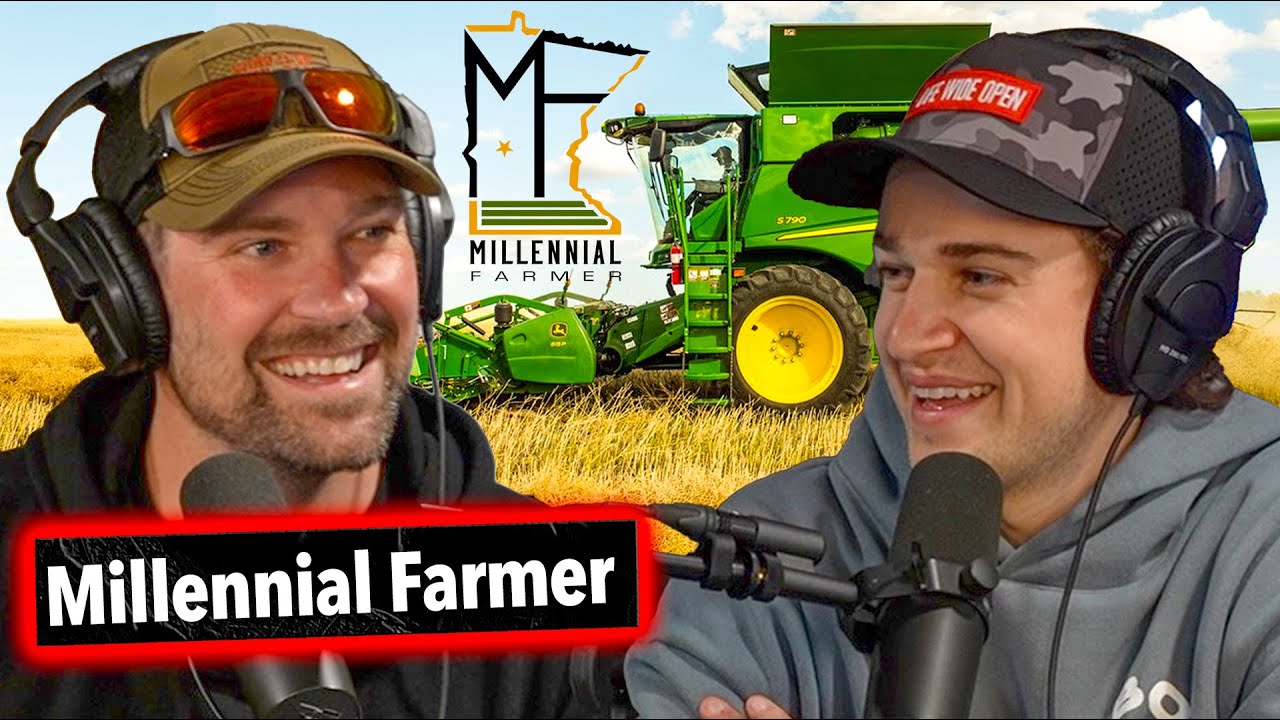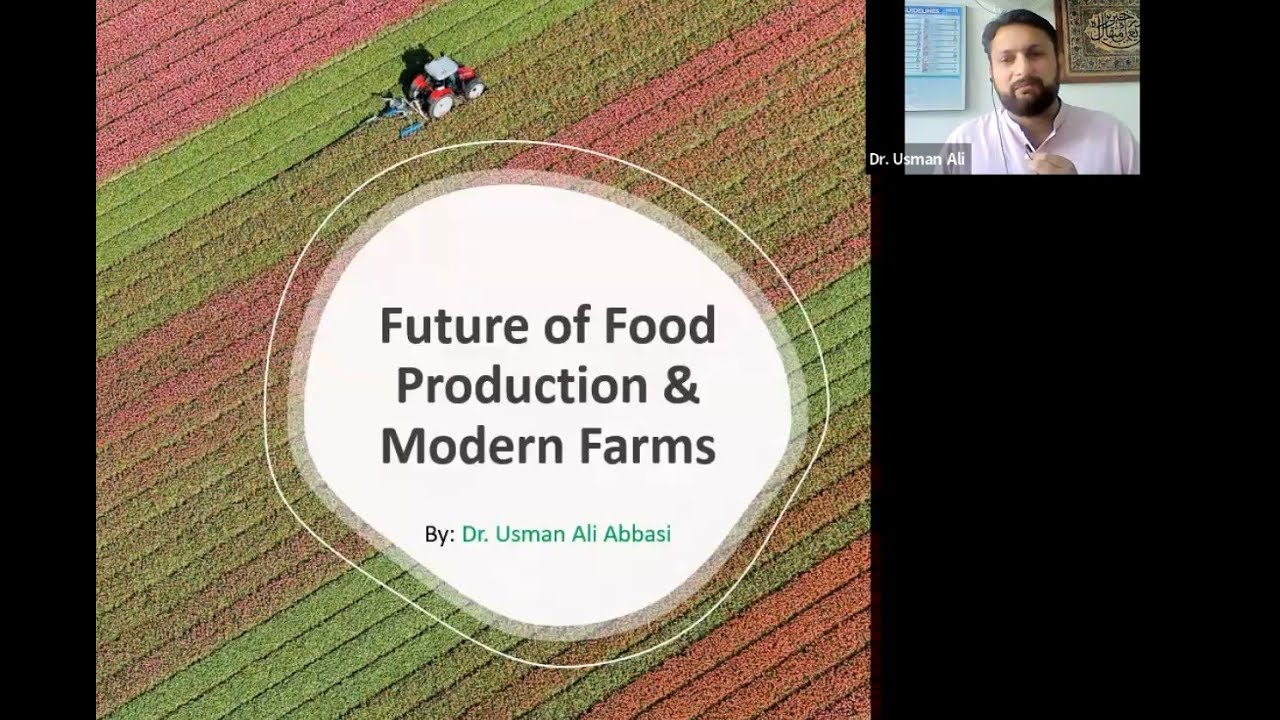Millennial farmers and the future of food production: Forget dusty overalls and back-breaking labor! This isn’t your grandpappy’s farm. A new generation is tilling the soil, armed with apps, drones, and a serious commitment to sustainable practices. These tech-savvy agriculturists are revolutionizing food production, one cleverly-optimized acre at a time. Prepare for a harvest of innovation!
This exploration delves into the unique farming methods employed by millennials, comparing them to traditional techniques. We’ll examine the economic challenges they face, from securing land to navigating volatile markets, and discover how they’re tackling climate change and labor shortages. We’ll also see how their innovative approaches are impacting food security, from farm-to-table initiatives to the use of data analytics for maximizing yields.
Get ready to meet the farmers who are shaping the future of our plates!
Millennial Farming Practices
Millennial farmers, armed with smartphones and a healthy dose of skepticism towards the “good old days,” are shaking up the agricultural landscape. They’re not just inheriting family farms; they’re reinventing them, blending traditional knowledge with cutting-edge technology and a strong commitment to sustainability. This generation is proving that farming can be both profitable and environmentally responsible, a feat that previous generations sometimes struggled to achieve.
Millennial farming techniques often stand in stark contrast to traditional methods. While older generations might rely on heavy machinery and monoculture cropping, millennials are increasingly embracing diversified systems, integrating livestock and crops in ways that mimic natural ecosystems. This shift reflects a growing understanding of the interconnectedness of the environment and the need for resilient agricultural systems. Precision agriculture, a concept almost unheard of a few decades ago, is now becoming commonplace amongst this tech-savvy generation.
Sustainable Farming Practices Adoption
The adoption rate of sustainable farming practices among millennials significantly surpasses that of older generations. Driven by a heightened awareness of climate change and environmental degradation, millennial farmers are more likely to adopt organic farming, permaculture, and other eco-friendly techniques. For example, the rise of community-supported agriculture (CSA) models, which directly connect farmers with consumers, is largely fueled by millennial farmers’ desire for transparency and direct engagement with their communities.
This contrasts with the often more isolated and market-driven approaches of previous generations. While traditional farming often prioritizes maximizing yield at any cost, millennial farmers are prioritizing long-term soil health, biodiversity, and reduced environmental impact.
Technological Tools and Innovations in Millennial Farming
Millennials are leveraging technology to improve efficiency and productivity in ways unimaginable to previous generations. This tech-savvy approach allows for more precise resource management, reduced waste, and increased yields. Data-driven decision-making is becoming the norm, transforming farming from a largely intuitive practice to a more scientific and data-informed one.
| Tool Name | Application | Impact on Food Production | Example |
|---|---|---|---|
| Precision GPS-guided machinery | Planting, spraying, harvesting | Reduced input costs (seeds, fertilizer, pesticides), increased yield, reduced environmental impact | A tractor equipped with GPS automatically adjusts its planting depth and fertilizer application based on real-time soil analysis. |
| Drone technology | Crop monitoring, irrigation management, pest detection | Early identification of problems, optimized resource allocation, improved yield | Drones equipped with multispectral cameras identify areas of stress in crops, allowing for targeted intervention. |
| Smart irrigation systems | Water management | Reduced water consumption, improved crop yields, increased profitability | Sensors monitor soil moisture levels and automatically adjust irrigation schedules based on real-time data. |
| Farm management software | Record keeping, data analysis, forecasting | Improved decision-making, increased efficiency, better financial management | Software platforms track inputs, outputs, and expenses, providing valuable insights into farm performance. |
Challenges Faced by Millennial Farmers: Millennial Farmers And The Future Of Food Production
Millennial farmers, armed with innovative ideas and a passion for sustainable practices, are facing a unique set of hurdles in their quest to feed the world. These challenges aren’t just about planting seeds; they’re about navigating a complex web of economic, environmental, and social pressures that threaten the very viability of their operations. Let’s delve into the grittier realities of modern farming.The economic landscape for millennial farmers is, to put it mildly, a rollercoaster.
High initial investment costs, coupled with fluctuating market prices and limited access to traditional financing, create a precarious financial situation. This isn’t your grandpappy’s farm; success requires a level of business acumen that goes beyond knowing how to coax a crop from the earth.
Economic Hurdles for Millennial Farmers
Land acquisition presents a significant barrier to entry. The cost of farmland has skyrocketed in many regions, pricing out young farmers who lack the generational wealth often associated with established agricultural families. Securing financing is equally challenging. Traditional lenders may be hesitant to extend credit to new farmers with limited credit history, leaving many to rely on alternative, and often more expensive, financing options.
Market volatility adds another layer of complexity. Fluctuating commodity prices can wipe out profits in a single season, leaving farmers struggling to stay afloat. For example, a sudden drop in the price of corn could devastate a farmer specializing in corn production, leading to significant financial losses and potentially forcing them out of business. This instability necessitates shrewd financial planning and risk management strategies that are often beyond the scope of a newly established farm.
Climate Change and Environmental Concerns
Climate change is no longer a distant threat; it’s a daily reality for millennial farmers. Increasingly unpredictable weather patterns – from extreme droughts to devastating floods – directly impact crop yields and livestock production. The added pressures of adapting to a changing climate, including investing in drought-resistant crops or implementing water conservation techniques, represent significant financial burdens. Furthermore, growing consumer demand for environmentally sustainable practices necessitates investments in technologies and practices that minimize environmental impact, such as precision agriculture techniques or renewable energy sources.
The cost of these adaptations can be prohibitive for farmers already struggling with tight margins. For instance, transitioning to organic farming methods often requires a significant upfront investment and a period of reduced yields before profitability is achieved.
Labor Shortages and Succession Challenges
Finding and retaining skilled labor is another persistent headache. The agricultural sector faces a growing labor shortage, exacerbated by an aging workforce and competition from other industries. This shortage impacts the efficiency and profitability of farms, forcing millennial farmers to rely on increasingly expensive temporary labor or struggle with understaffing. The issue of farm succession further complicates matters.
Many family farms face the challenge of transitioning ownership to the next generation, often encountering difficulties in transferring land, assets, and knowledge effectively. Without a clear succession plan, family farms risk dissolution, leading to the loss of valuable agricultural land and expertise. For example, the passing of a family patriarch who possesses decades of invaluable farming knowledge without a proper system of knowledge transfer can result in a significant decline in the farm’s productivity and overall success.
Millennial Farmers and Food Security
Millennials, armed with smartphones, sustainable practices, and a healthy dose of millennial-esque idealism, are shaking up the agricultural world. Their impact on food security, both locally and globally, is a complex tapestry woven with threads of innovation, challenge, and a whole lot of organic kale. This isn’t your grandpappy’s farm – and that’s a good thing.Millennial farming practices, while sometimes challenging established norms, are increasingly contributing to enhanced food security.
Their embrace of technology, coupled with a focus on sustainability and community engagement, offers promising solutions to pressing global food challenges. However, access to resources and overcoming systemic barriers remain significant hurdles.
Innovative Approaches to Food Distribution and Waste Reduction
Millennials are pioneering creative solutions to get food from farm to fork more efficiently and with less waste. This involves a multifaceted approach, embracing technology and community building. For example, many millennial farmers utilize online platforms and direct-to-consumer models, cutting out intermediaries and reducing transportation costs and spoilage. Community-supported agriculture (CSA) programs, subscription boxes, and farmers’ markets are thriving, fostered by a millennial desire for transparency and connection with their food sources.
Furthermore, innovative preservation techniques, such as fermentation and drying, are gaining popularity, extending the shelf life of produce and minimizing waste. Consider a millennial farmer in Vermont who uses a mobile app to connect directly with consumers, allowing them to pre-order produce and pick it up at a designated location, reducing transportation needs and waste. Or imagine a group of millennial farmers in California who collaborate on a shared cold storage facility, minimizing energy use and extending the shelf-life of their diverse harvests.
A Hypothetical Scenario: Revitalizing Rural Iowa
Let’s imagine a scenario where millennial farmers significantly increase their participation in agriculture within a specific region – say, rural Iowa. Iowa, historically a major agricultural producer, has faced challenges with aging farmers and declining rural populations. The influx of millennial farmers, with their tech-savvy approach and emphasis on sustainable practices, could revitalize the region. They could implement precision agriculture techniques, using data-driven insights to optimize resource use and maximize yields.
This could lead to increased crop production, potentially boosting the region’s economic output and providing more food for local and national markets. Furthermore, their focus on diversification – growing a wider variety of crops, including specialty crops – could enhance food security by reducing reliance on monoculture farming and creating more resilient agricultural systems. The increased economic activity could also attract younger populations back to rural areas, creating a positive feedback loop and strengthening the community’s overall resilience.
This scenario isn’t just a pipe dream; similar revitalization efforts are already underway in various parts of the world, showcasing the transformative potential of millennial farmers.
The Role of Technology in Millennial Farming

Millennial farmers aren’t just embracing technology; they’re practically wearing it as a second skin. Forget the romanticized image of farmers in overalls – these are digital natives who understand that the future of food production hinges on data, automation, and smart solutions. They’re leveraging technology not just to survive, but to thrive, pushing the boundaries of what’s possible in agriculture.
This technological leap isn’t just about efficiency; it’s about sustainability, resilience, and ultimately, feeding a growing global population.Precision agriculture technologies are transforming how millennial farmers work, moving away from traditional “spray and pray” methods towards targeted interventions. This results in reduced input costs, increased yields, and a lighter environmental footprint.
Adoption of Precision Agriculture Technologies
GPS-guided tractors and machinery allow for precise planting and spraying, minimizing overlaps and reducing waste. Imagine a tractor autonomously navigating a field, guided by a satellite, planting seeds with pinpoint accuracy – that’s the reality for many millennial farmers. This level of control allows for variable rate application of fertilizers and pesticides, meaning only the necessary amounts are used, where they are needed.
Drones equipped with high-resolution cameras provide aerial surveys of crops, allowing farmers to identify areas of stress or disease early on, enabling timely intervention and preventing widespread damage. Sensors embedded in the soil monitor moisture levels, nutrient content, and other crucial parameters, providing real-time data that informs irrigation and fertilization decisions. This data-driven approach optimizes resource use and maximizes yields, making farming both more efficient and more environmentally responsible.
Mobile Applications and Software for Farm Management
The modern farmer’s smartphone isn’t just for scrolling through social media; it’s a powerful tool for managing every aspect of the farm. These apps provide seamless integration of data from various sources, allowing for better decision-making and overall farm efficiency.
- Farm management software: Platforms like Granular Insights and Agworld provide tools for tracking inputs, managing finances, and monitoring crop performance. These platforms often integrate with precision agriculture technologies, providing a holistic view of the farm’s operations.
- Marketing and sales apps: Apps like Farmers Business Network and AgriWebb facilitate direct-to-consumer sales, connecting farmers with local markets and consumers, bypassing traditional supply chains. These platforms often offer tools for managing orders, processing payments, and tracking deliveries.
- Communication and collaboration tools: Slack, WhatsApp, and other communication platforms are vital for millennial farmers, allowing for instant communication with suppliers, buyers, and other stakeholders. This facilitates collaboration and efficient problem-solving.
- Weather and climate apps: Accurate weather forecasting is crucial for planning planting and harvesting schedules, and apps like AccuWeather and The Weather Channel provide farmers with real-time weather data and alerts.
Potential of Data Analytics and AI in Optimizing Farming Processes
Data analytics and artificial intelligence (AI) are revolutionizing farming, allowing farmers to make informed decisions based on vast amounts of data. AI-powered tools can analyze historical data, weather patterns, and soil conditions to predict yields with greater accuracy, enabling farmers to optimize planting strategies and resource allocation. Predictive models can identify potential problems, such as disease outbreaks or nutrient deficiencies, before they significantly impact crop yields.
For example, AI algorithms can analyze drone imagery to detect early signs of disease or stress in crops, allowing for prompt intervention and preventing significant losses. This data-driven approach not only increases efficiency but also minimizes environmental impact by reducing the use of resources like water and fertilizers. Imagine an AI system that can predict a potential drought weeks in advance, allowing a farmer to adjust irrigation schedules and minimize crop damage.
That’s the power of data analytics and AI in modern farming.
Marketing and Consumer Engagement

Millennial farmers are shaking up the agricultural landscape, and it’s not just about their farming techniques. Their marketing strategies are equally revolutionary, prioritizing direct consumer relationships and transparent communication in a way that’s often absent from larger, more conventional agricultural businesses. This direct-to-consumer approach fosters trust, builds brand loyalty, and allows these farmers to tell their unique stories, something that resonates deeply with today’s increasingly conscious consumers.Millennial farmers employ a variety of strategies to connect directly with their customers, often bypassing traditional wholesale channels.
This creates a more efficient and equitable system, allowing farmers to receive a larger share of the profits and consumers to get fresher, higher-quality produce.
Direct-to-Consumer Marketing Strategies
Millennial farmers are masters of connecting directly with consumers. Farmers’ markets are a staple, providing a vibrant face-to-face interaction where they can build relationships, answer questions, and showcase their products. Community Supported Agriculture (CSA) programs are another popular choice, offering consumers a regular supply of seasonal produce in exchange for a subscription fee. This model cultivates a sense of community and guarantees a consistent income stream for the farmer.
Finally, online sales, through websites, social media platforms, and even online marketplaces, allow millennial farmers to reach a broader audience beyond their immediate geographic area. This expansion significantly increases their reach and allows them to tap into niche markets with specific dietary needs or preferences.
Comparison of Marketing Approaches
Conventional agricultural businesses often rely heavily on large-scale distribution networks and mass marketing campaigns, focusing on brand recognition and price competitiveness. This approach often prioritizes efficiency and volume over direct consumer interaction and transparency about farming practices. In contrast, millennial farmers prioritize building relationships with their consumers, emphasizing transparency about their farming methods, sustainability practices, and the story behind their products.
They use social media to share behind-the-scenes glimpses into their farms, engage in conversations with their followers, and build a loyal community around their brand. This personalized approach fosters trust and loyalty, which is crucial in today’s market where consumers are increasingly interested in knowing the origin and story of their food.
Hypothetical Marketing Campaign: “Sunshine Farms”
Let’s imagine a hypothetical marketing campaign for “Sunshine Farms,” a millennial-run farm specializing in heirloom tomatoes. Their campaign, titled “From Our Sun to Your Table,” emphasizes transparency and sustainability. The campaign would feature high-quality photography showcasing the vibrant tomatoes growing in the field, alongside images of the farmers themselves, highlighting their passion and dedication. Social media would play a key role, with regular posts showing the farm’s daily activities, including planting, harvesting, and even dealing with the occasional mischievous squirrel raid.
A dedicated website would offer detailed information about their farming practices, including their commitment to organic methods and biodiversity. The website would also include recipes featuring their tomatoes, creating a community hub for sharing culinary creations and building a strong brand identity. Finally, the campaign would culminate in a “Meet the Farmer” event at a local farmers’ market, offering free samples and a chance for consumers to connect directly with the Sunshine Farms team.
This multi-faceted approach combines online engagement with offline interaction, fostering a sense of community and reinforcing the farm’s commitment to transparency and sustainability. The campaign’s success would be measured not only by sales but also by the growth of the farm’s online community and the strength of the relationships built with their customers.
The Future of Food Production

Millennial farmers, armed with their avocado toast-fueled ambition and surprisingly effective TikTok farming tips, are poised to revolutionize how we grow, distribute, and consume food. Forget dusty overalls and sun-beaten faces; this generation is bringing tech-savvy solutions and a sustainable mindset to the farm, promising a future of food production that’s both bountiful and environmentally responsible. This isn’t your grandpappy’s farm, folks.
Imagine a vibrant tapestry of agricultural innovation, woven with threads of technology and sustainability. This is the future of food production as envisioned through the lens of millennial farming practices.
A Visual Representation of Millennial Farming’s Impact, Millennial farmers and the future of food production
Picture this: a sprawling farm, not a monotonous expanse of monoculture, but a diverse ecosystem thriving with vertical farms nestled amongst traditional fields. Drones zip between rows of crops, performing precision spraying and automated harvesting, their movements orchestrated by AI-powered software. Solar panels gleam in the sunlight, powering the farm’s operations, while rainwater harvesting systems ensure efficient irrigation.
Nearby, a community-supported agriculture (CSA) hub bustles with activity, connecting consumers directly with the farmers who grow their food. The entire operation is meticulously tracked and analyzed using data analytics, optimizing resource use and maximizing yields. The landscape is a testament to sustainable practices, with thriving pollinator habitats and carbon-sequestering techniques integrated seamlessly into the farming process.
The overall impression is one of efficiency, technological sophistication, and harmony between human activity and the natural environment – a stark contrast to the often environmentally damaging practices of the past.
Millennial Farmers Addressing Food-Related Challenges
Millennials are uniquely positioned to tackle pressing food security issues. Their entrepreneurial spirit and tech fluency are enabling them to innovate solutions for food deserts. Imagine mobile farming units, utilizing hydroponics or aquaponics, bringing fresh produce to underserved urban communities. Their focus on sustainable practices also helps to address malnutrition by promoting the cultivation of diverse, nutrient-rich crops.
For example, the increased adoption of vertical farming techniques, popular among millennial farmers, allows for year-round production of leafy greens and other essential vegetables, even in areas with limited arable land, thus directly impacting access to nutritious food in food deserts and potentially mitigating malnutrition.
Millennial Farming’s Influence on Agricultural Policy
The rise of millennial farmers will undoubtedly reshape agricultural policy. We can anticipate a greater emphasis on sustainable farming practices, supported by government incentives and subsidies that reward environmentally conscious agriculture. Policies might prioritize technological advancements, offering grants for the adoption of precision agriculture techniques and data-driven farming tools. Direct-to-consumer marketing models, favored by many millennial farmers, could influence policy changes regarding food labeling and traceability, ensuring greater transparency and consumer trust.
For instance, the increasing popularity of farm-to-table initiatives could lead to government support for local food systems, providing financial assistance for farmers markets and community-supported agriculture programs. Furthermore, we might see a shift towards policies that support the development of resilient food systems capable of withstanding climate change impacts, a crucial aspect that resonates strongly with the millennial generation’s environmental concerns.
This could involve investments in research and development of drought-resistant crops and climate-smart agricultural practices.
Ending Remarks

So, there you have it: millennial farmers aren’t just planting seeds; they’re planting the seeds of a revolution. With their tech-driven approaches, commitment to sustainability, and direct consumer engagement, they’re rewriting the rules of agriculture. The future of food production looks bright, fertile, and surprisingly app-dependent. Let’s raise a glass (of locally-sourced, sustainably-grown juice, of course) to these innovative food heroes!
